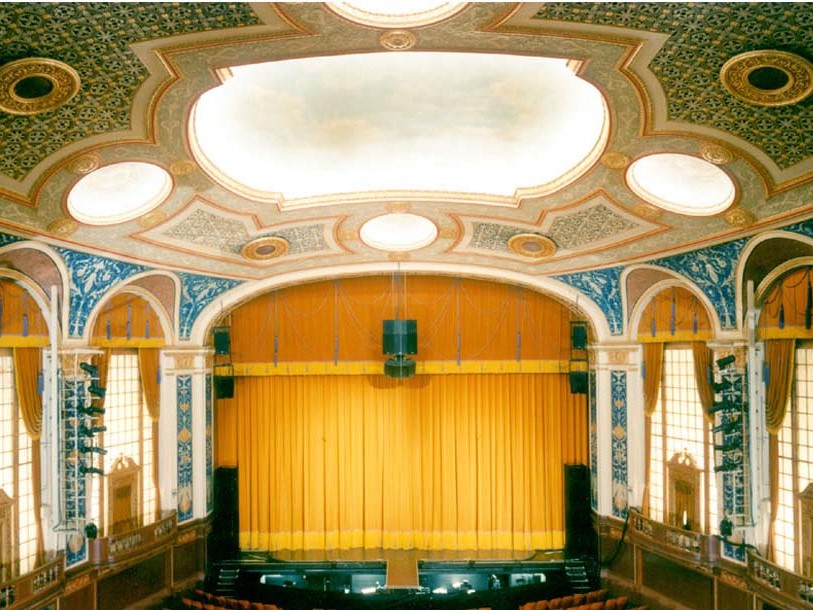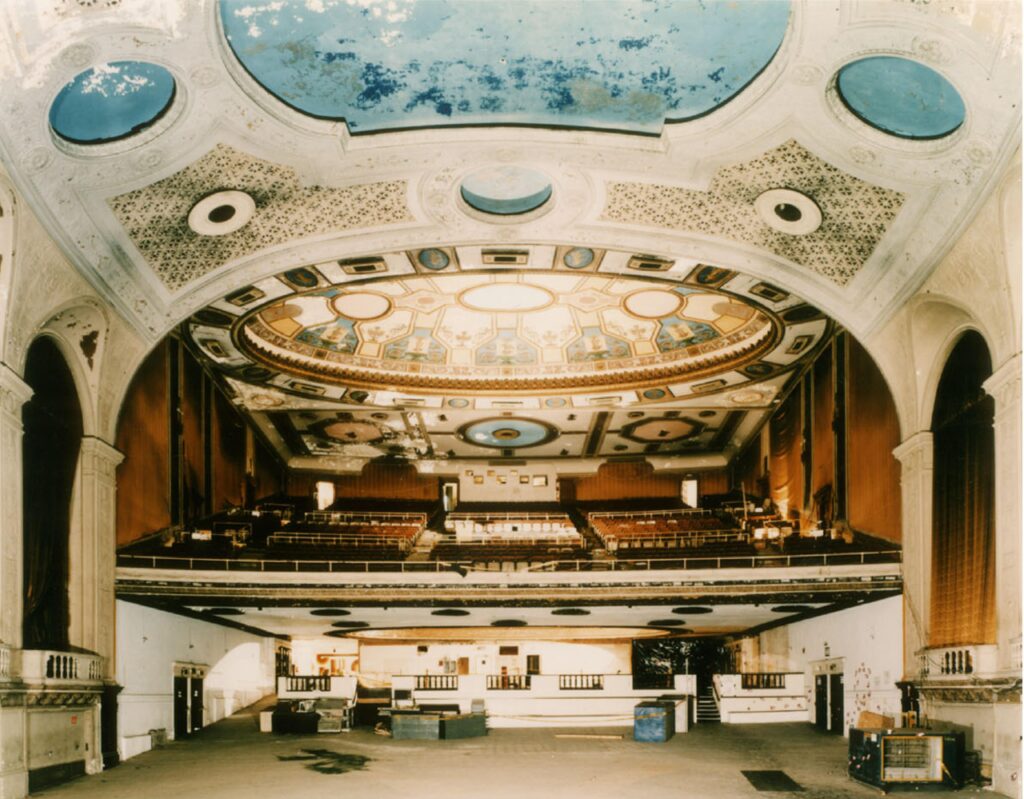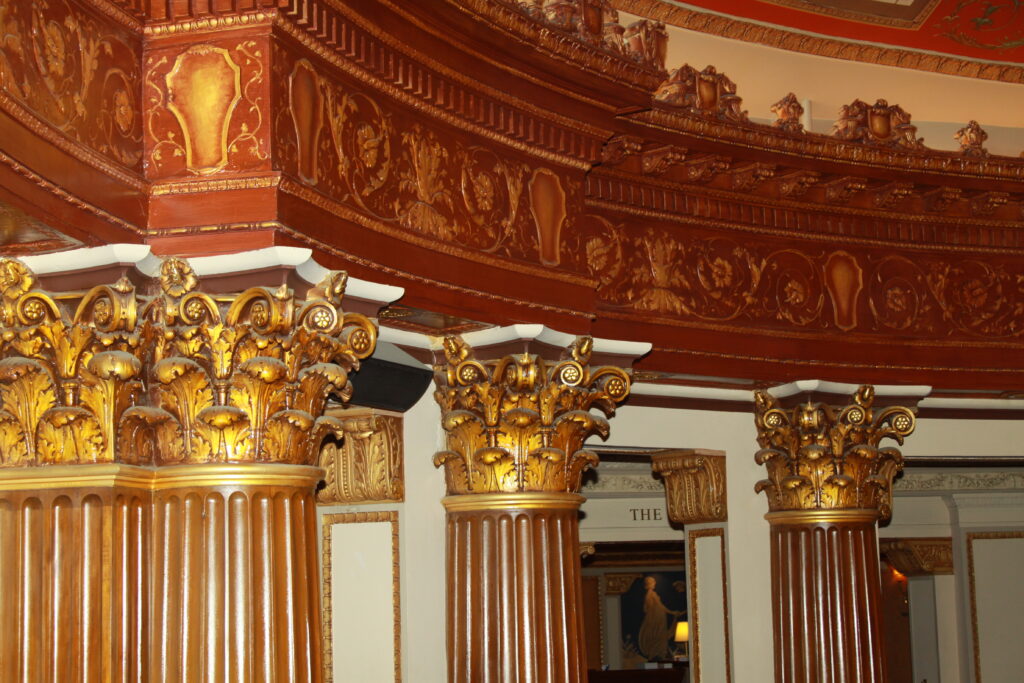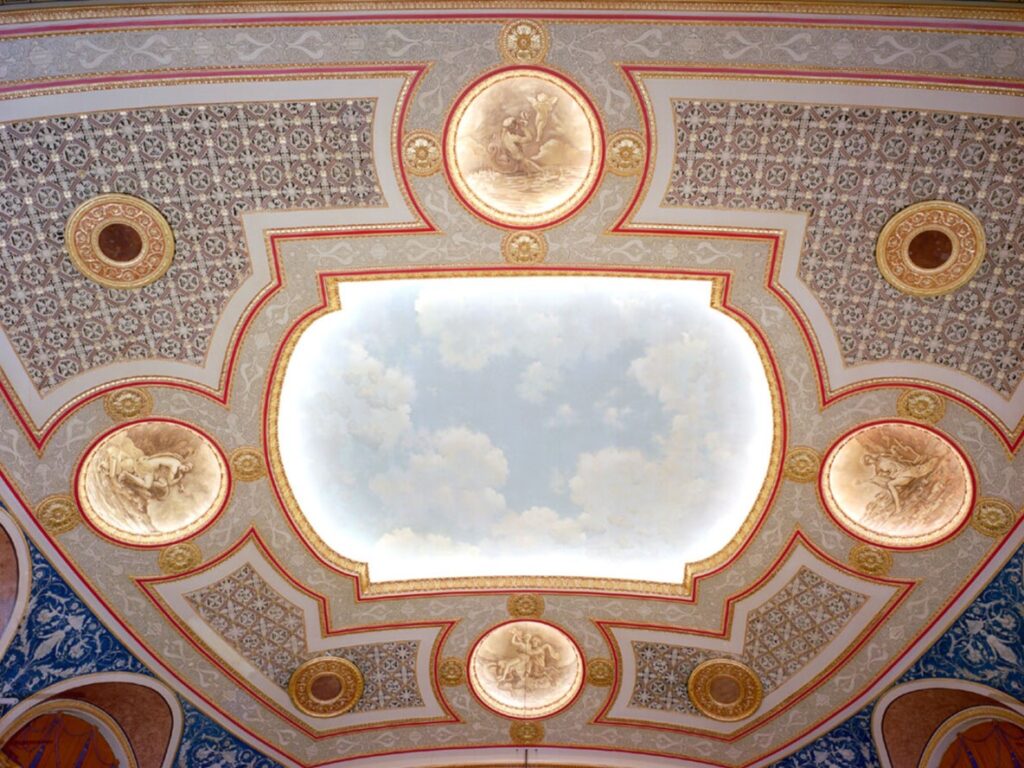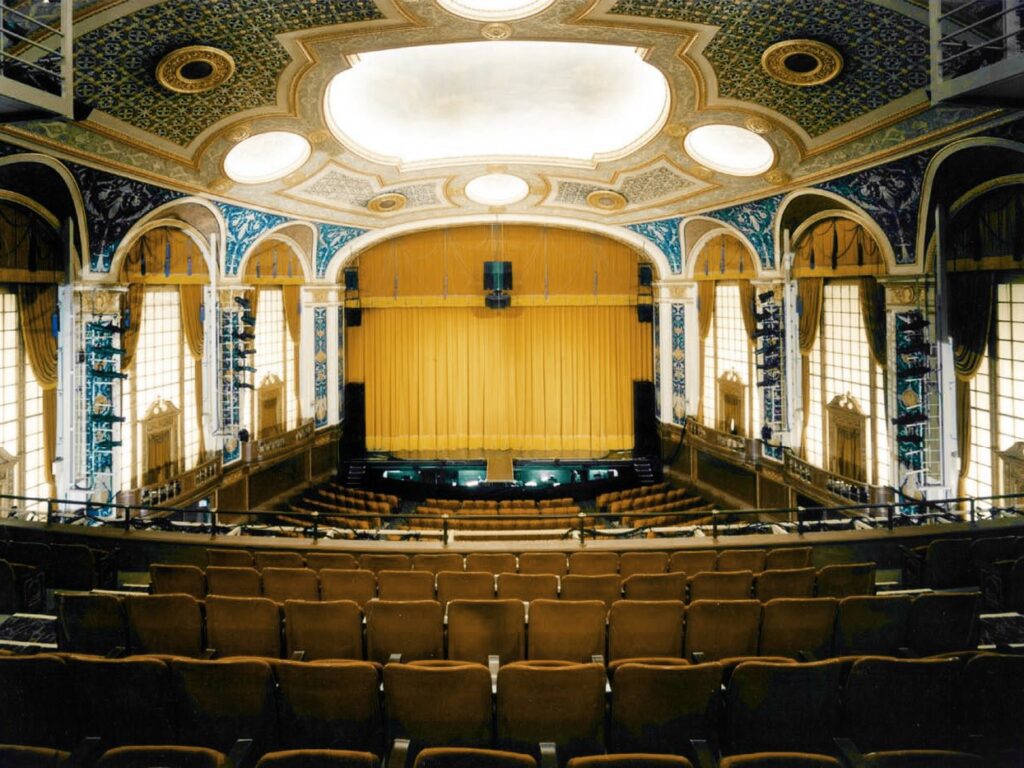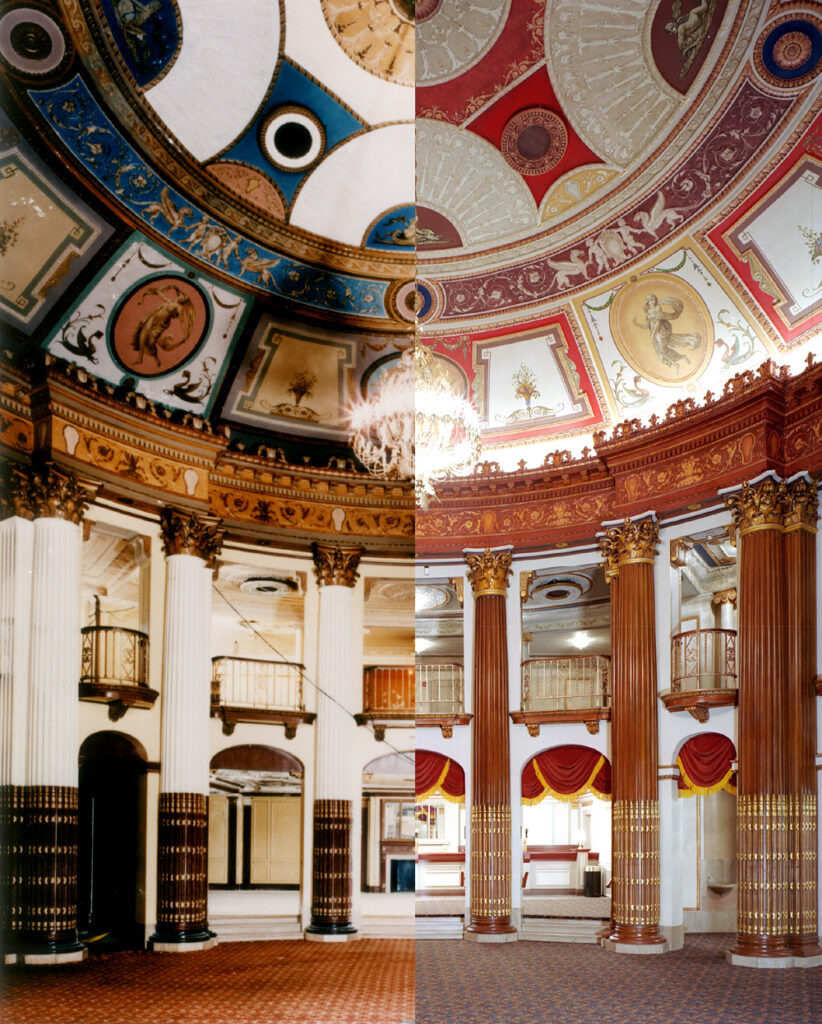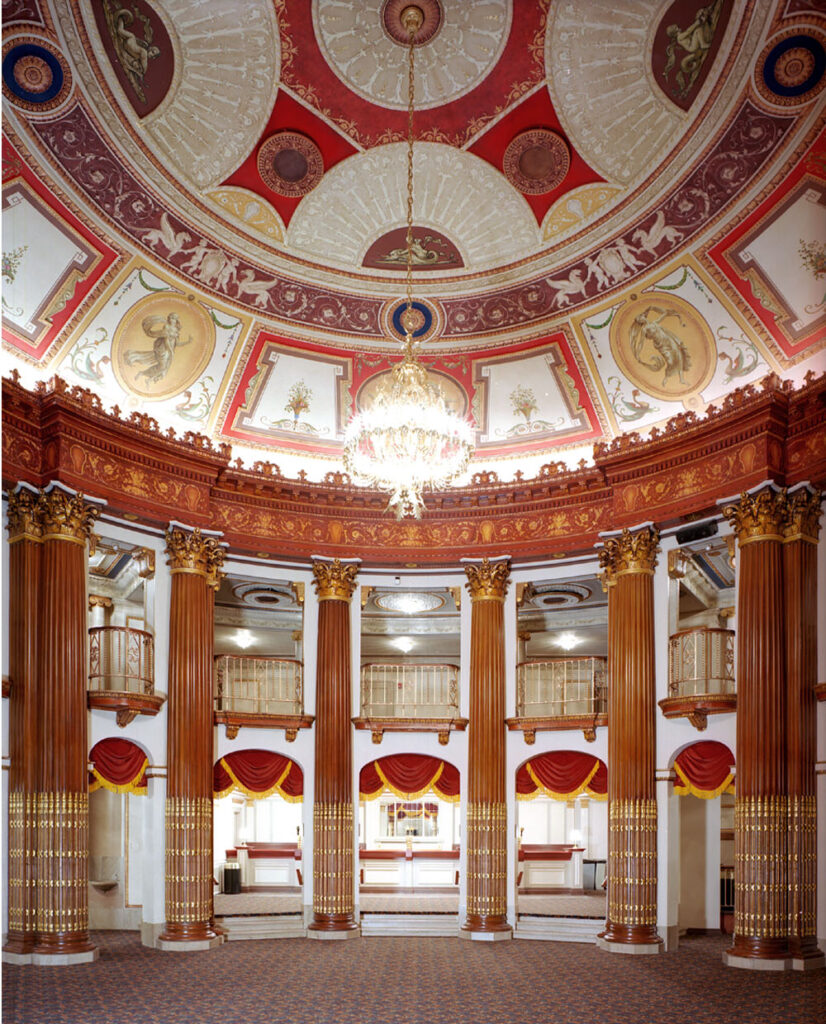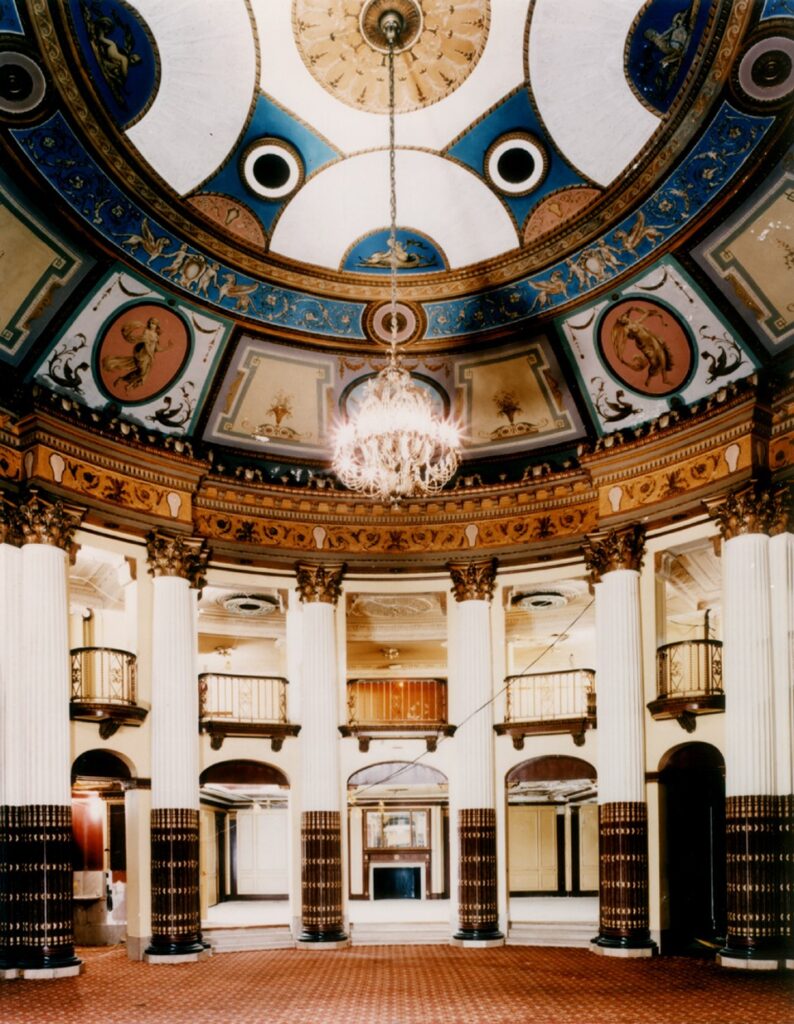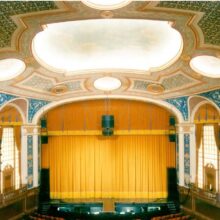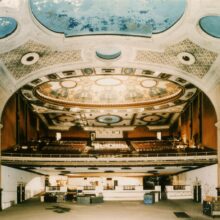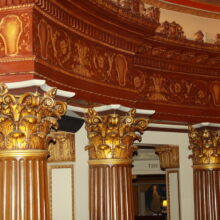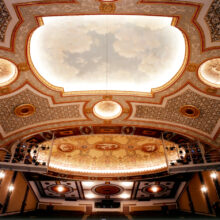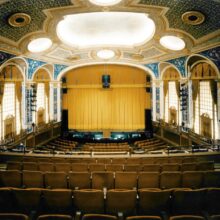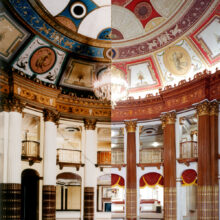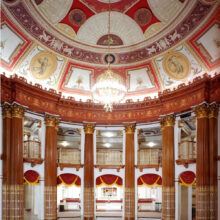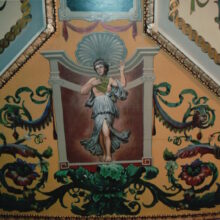Allen Theatre, Playhouse Square
Playhouse Square originated between 1921 and 1922 as a collection of interconnected theatres located near the intersection of East Fourteenth Street and Euclid Avenue in Cleveland, Ohio. Joseph Laronge, a local real estate developer, envisioned the area as mecca for shops and theatres. Laronge partnered with business magnate and pioneer of the motion picture industry Marcus Loew to realize his ideas. Playhouse square consisted of five major theatres: State, Ohio, Hanna, Palace, and Allen. The Allen Theatre was designed by renowned architect C. Howard Crane. His architecture firm the Crane Company was prolific in the creation of movie theatres across the US, designing more than 250 including the Earle Theatre (aka the Warner Theatre) in Washington DC (1922) and the Virginia Theatre in Champaign, IL (1921). The Allen Theatre was designed as a movie palace in a Neo-Classical, Renaissance Revival style. The 45-foot-tall lobby rotunda appears to have been modeled after Raphael’s High Renaissance Villa Madama near Rome. The auditorium contains some atmospheric elements, with a large cloud filled daytime sky affixed to the ceiling directly in front of the stage.
However, by 1969 all except the Hanna Theatre had closed due to declining attendance. In the 1970s the deteriorated theatres were slated for demolition. The Junior League of Cleveland stepped in to save them, founding the Playhouse Square Foundation and working with Cuyahoga County commissioners to both restore and reopen the theatres. The collection of five theatres was added as a group to the National Register of Historic Place in 1978. The Allen Theatre remained closed until 1993, when it was purchased by the Playhouse Square Foundation and slated for restoration. By the end of the twentieth century all of the theatres had reopened and were hosting performances, becoming the nation’s second largest performing arts complex after New York’s Lincoln Center.
EverGreene was contracted to perform two tasks. The first was to conduct an extensive finishes investigation and microscopic analysis, as well as perform a cursory condition survey of the existing interior finishes and plaster features in Allen Theatre. The purpose was to support renovation efforts by documenting the historic color palettes and decorative motifs, as well as to understand the current conditions of the remaining flat and decorative plasterwork. The second task was the actual conservation and restoration efforts. Historic plaster was stabilized and consolidated. Major areas of loss were infilled with compatible materials.
New ornamental plaster was fabricated to repair severely damaged areas. Surviving grisaille figurative murals were conserved and restored where necessary. Damaged and overpainted sky and figurative murals were replicated by our artists on canvas and installed in the theater. All historic decorative finish schemes were reinstated based upon the extensive finishes investigation.
